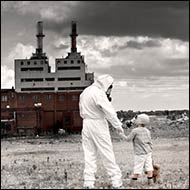coal is the dirtiest
everything in our lives could be powered by clean renewable energy, like wind and solar, by transitioning to renewable energy and energy efficiency.
energy data, open guide to the world's energy system. Global energy monitor globalenergymonitor.org
keep dirty coal in the ground, and end the practice of burning coal for electricity, to eliminate the noxious carbon emissions that are exacerbating the climate crisis.

coal information: Union of Concerned Scientists
by burning coal for electricity we are steadily spewing greenhouse gases. Rising concentrations of heat-trapping greenhouse gases are changing our climate, with far-reaching implications for our environment and our oceans, which are absorbing both carbon dioxide and heat.
there is no such thing as "clean coal." Clean coal is a marketing term, introduced about a decade ago as concern about global warming began to mount. At the time, advocates of the use of coal for power generation began using the term to refer to a process, not a product, that would result in fewer harmful emissions. Generally, references to clean coal are references to what are called carbon capture and storage processes, or CCS. CCS captures the carbon dioxide emitted from burning fuel and stores it somewhere, as you might store the byproducts of other forms of energy.
we must ban coal mining on federal lands to keep dirty coal out of our national parks. We need to keep Obama's environmental regulations in place and end the use of coal and save our climate.
coal plants might be even more toxic than we thought.
why do we burn dirty coal to produce electricity?
the problem is that we burn dirty coal in outland power plants to produce electricity for the city.

coal fired power plants
industrial carbon pollution from coal fired power plants
coal and water
In the U.S., according to the U.S. Environmental Protection Agency (EPA) coal-burning power plants are responsible for more than half of all toxic water pollution.
Existing U.S. power plants emitted 2160 million metric tons of carbon pollution in 2011,
constituting nearly 40 percent of the domestic anthropogenic* carbon dioxide emissions.
(* originating in human activity)